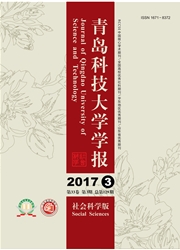

 中文摘要:
中文摘要:
西方学者在对全球城市、世界城市网络及巨型城市区域的研究中,提出利用高端生产者服务业的空间分布来研究城市群体区域空间联系格局的理论和方法。立足生产者服务业布局数据,根据咨询管理、会计、律师、保险、银行、物流等六个高端生产者服务业的公司及分支机构在山东省沿海城市带9个城市和73个区(县)级空间单元的业务联系建立量化矩阵,研究山东沿海城市带区域空间联系格局的特征。研究表明,在城市和功能区尺度上,山东沿海城市带区域空间联系格局具有层级}生、尺度敏感性、跳置走I}生、距离衰减性、方向性、选择性和双中心空间格局特征;在不同行业上,高端生产者服务企业构筑了特征各异的联系网络格局。这一研究对于解析城市群体区域空间联系内在机理有着重大意义。
 英文摘要:
英文摘要:
Western scholars propose to use the spatial distribution of advanced producer services (APS) to study the theories and methods of the spatial connection pattern in urban agglomeration regions in their study on global cities, world city network and mega-city zones. Based on APS data, we build a quantified matrix to study the characteristics of regional spatial connection pattern of coastal urban belt (CUBS) of Shandong Province in accordance with the business connection between companies of inquiry management, accountant, lawyer, insurance, bank and logistics and other APS companies in 9 cities and 73 counties. The result shows that on the scale of cities and functional zones, the regional spatial connection pattern of CUBS has the characters of hierarchy, sensitive scale, leaping, distance decay, directionality, selectivity, and dual- core spatial pattern; in different industries, APS enterprises construct the connection networking pattern with different characteristics. So this research has important significance in analyzing the inner mechanism of spatial connection pattern in urban agglomeration regions.
 同期刊论文项目
同期刊论文项目
 同项目期刊论文
同项目期刊论文
 期刊信息
期刊信息
